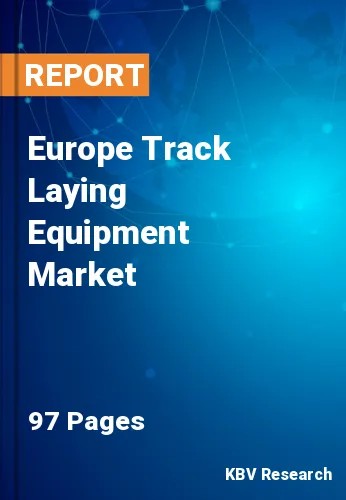The Europe Track Laying Equipment Market would witness market growth of 5.0% CAGR during the forecast period (2023-2030).
The track laying equipment landscape is changing due to incorporating digital technologies. Real-time monitoring systems, Internet of Things (IoT) sensors, and artificial intelligence are incorporated into track laying machines to enable data-driven decision-making. These digital advancements enhance equipment performance, improve operational efficiency, and contribute to predictive maintenance practices, minimizing downtime and optimizing construction processes. The trend towards modular and customizable designs in track laying equipment is gaining traction. Manufacturers offer machines with modular components that can be easily adapted to different project requirements. This flexibility allows operators to tailor the equipment to a project's individual needs, resulting in greater productivity and cost-effectiveness.
Automation is having a huge impact on the market. The development of autonomous or semi-autonomous track laying machines is on the rise. These machines leverage robotics, GPS technology, and advanced sensors to operate with minimal human intervention. Automation improves the precision of track laying processes, enhances safety, and reduces reliance on manual labour. Innovations in materials science are impacting the design of track laying equipment. Advanced materials are increasingly being used; examples include composite materials and high-strength alloys. These materials offer improved durability, reduced weight, and increased resistance to wear and corrosion, contributing to the longevity and performance of track laying machines.
A growing emphasis is on enhancing operator comfort and safety in track laying equipment. Manufacturers are incorporating ergonomic designs, operator-assist features, and advanced safety systems to create a conducive working environment. This trend not only improves the well-being of operators but also contributes to increased productivity and reduced fatigue. Remote monitoring and telematics solutions are becoming integral to track laying equipment. These technologies enable real-time monitoring of equipment performance, location tracking, and diagnostics. Remote monitoring facilitates proactive maintenance, reduces downtime, and enhances overall fleet management efficiency.
France is renowned for having one of the most extensive high-speed rail networks globally, including the TGV (Train à Grande Vitesse) system. France's commitment to intermodal connectivity involves seamless integration between different modes of transportation, including rail, road, and maritime. Urban transit integration aligns with broader urban planning initiatives in France. Developing efficient and well-connected transit systems, supported by track laying equipment, contributes to sustainable urbanization and improved quality of life in France. Thus, all these factors will uplift the regional market’s expansion in the coming years.
The Germany market dominated the Europe Track Laying Equipment Market, By Country in 2022, and would continue to be a dominant market till 2030; thereby, achieving a market value of $48,980.2 Thousands by 2030. The UK market is showcasing a CAGR of 4.1% during (2023 - 2030). Additionally, The France market would register a CAGR of 5.7% during (2023 - 2030).
Free Valuable Insights: The Global Track Laying Equipment Market will Hit $818.5 Million by 2030, at a CAGR of 5.6%
Based on Application, the market is segmented into Heavy Rail and Urban Rail. Based on Type, the market is segmented into New Construction Equipment and Renewal Equipment. Based on countries, the market is segmented into Germany, UK, France, Russia, Spain, Italy, and Rest of Europe.
By Application
By Type
By Country
Our team of dedicated experts can provide you with attractive expansion opportunities for your business.

